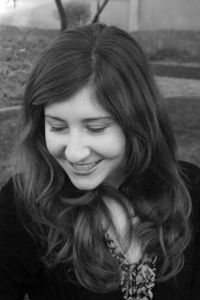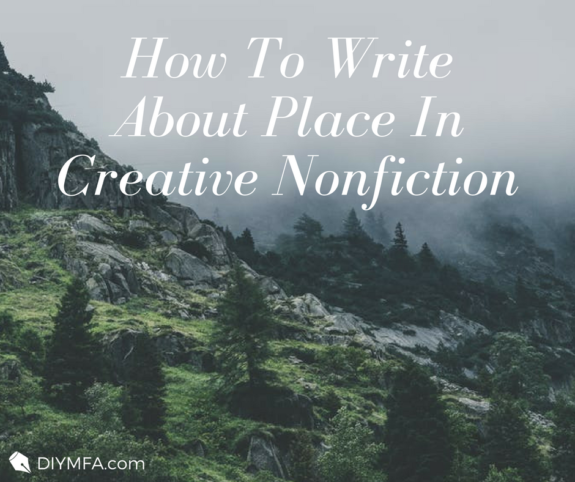You may have seen the title of this post and thought I was going to talk about travel writing. But that’s not the only genre of creative nonfiction in which you can write about place! A common misconception about writing about place in creative nonfiction is that you have to write about particularly exotic spaces. Consider that debunked: as we previously discussed, you don’t have to be a world traveler to write about your life. Everyone has unique experiences and takeaways that can be gleaned from their work.
Creative nonfiction presents some great opportunities to write meaningfully about the places you’ve lived in and traveled to as well as place your unique stamp on a locale, even if it is well-known. Like Virginia Woolf in London, Balzac in Paris, and Joyce in Ireland, you can write about place, too!
Define Place
In his essay, “How to Write Creative Nonfiction: Writing about Place” Dave Hood reminds us to expand beyond physical location by including elements like culture, language, values, and customs:
“In creative nonfiction, the place or location where the event or experience took place is more than just about the name of the place. It is also the physical location of the place, the physical attributes, such as the urban setting of crowds, pollution, public transit, traffic jams or the rural setting of open spaces, fewer people, fields, farms, and small communities.”
Don’t just treat the places you write about as a backdrop or an image. Place can be both setting and character, and the implications of that can be far-reaching in our work. When given its due consideration, place can make the early lines of a piece dazzle. Use this to your advantage by brainstorming sublime, unusual, or even pedestrian experiences to provide that ideal impetus for the beginning of your work.
Hood adds that writers should also consider the meaning and significance of a place for them, and includes a great checklist to print out and tape to your desk when writing about place.
Interweave Other Narratives Into Yours to Compare/Contrast
If you haven’t been somewhere, you can’t write about it as if you have. But you can approach writing about a place by summarizing, analyzing, and weaving narratives together from writers who have visited or lived there. Above, I mentioned seminal writers and the places they are commonly associated with. Read writers that are affiliated with the places you want to write about. What point of view did they lend to our understanding of that place? Did they unfairly obscure its reality or open the door to greater understanding?
Right now, the essay form is one of the most malleable there is: You can include other experiences, literary works, historical perspective, philosophy, or science in your narrative. While this may range depending on the publications you wish to write for, it’s possible to lend texture to your work by adding these varied cultural pieces to your own perspective while still relying on moments from your life as a lens. And of course always make sure to cite properly if you quote an author!
Take a Walker’s Perspective
Besides looking at photos, you may feel that you have to stick with your imagination to remember a place. But the vast range of resources online makes it possible for us to envision space beyond even our memories. Just as you might write about a place you’ve never been in a fiction piece, walk it in Google Maps. Has the place changed since you’ve visited? Does it look different in earlier views? This could be potential material.
If you can access the place, it may also be helpful to simply take a walk. Although many of us do write on keyboards indoors, don’t limit yourself to your living room when considering narrative possibilities. What sights, smells, and sounds are out there? How do you feel as a walker on that street? What stands out to you? Asking questions are helpful to a city walker. Also, your unique perspective as a walker can lend a lot to your narrative. It may not feature as the main point, but can do a lot for your approach to the story you want. As Rebecca Solnit writes in Wanderlust: A History of Walking,
“Walkers are ‘practitioners of the city,’ for the city is made to be walked. A city is a language, a repository of possibilities, and walking is the act of speaking that language, of selecting from those possibilities. Just as language limits what can be said, architecture limits where one can walk, but the walker invents other ways to go.”
This is not entirely literal: writers are walkers, navigating their own path towards a narrative that works. Sometimes there are snags because we get lost and scrap material, but this does not have to be a bad thing. Solnit helps us understand that we are selecting from those possibilities and should shift to view writing as a freeing rather than frustrating exercise. This might also allow you to come up with new things to notice and new inventions that don’t rely on older realities.
 Kayla Dean is an arts and entertainment writer in Las Vegas, where she has interviewed several celebrities for publications like Vegas Seven. She has several YA stories in the works and blogs about writing and creativity on her personal website, where she also hosts the Millennial Writer Series. She received her BA in English from the University of Nevada, Las Vegas and will pursue her Master’s in English Literature this fall. You can find her on Twitter@kayladeanwrites.
Kayla Dean is an arts and entertainment writer in Las Vegas, where she has interviewed several celebrities for publications like Vegas Seven. She has several YA stories in the works and blogs about writing and creativity on her personal website, where she also hosts the Millennial Writer Series. She received her BA in English from the University of Nevada, Las Vegas and will pursue her Master’s in English Literature this fall. You can find her on Twitter@kayladeanwrites.







